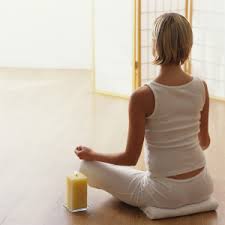For some people who have experienced the benefits of dry needling, they describe this acupuncture – inspired non-pharmacologic chronic pain management as nothing less than transformative. The practice is now largely considered a mainstay in the management of chronic pain in major physical therapy clinics in major cities all over the world. Actually, St. Kilda Road Physio clinic is one of the establishments in the said area known for its well-founded and well-documented dry needling techniques which are effective in the management of chronic pain in their patients.
Oriental Roots
Dry needling is pretty much similar to the Chinese version of acupuncture that relies on the meticulous palpation of certain ‘ah shi’ points all over the body. Chinese acupuncturists use low gauge needles to be inserted into these ‘ah shi’ points to unblock the flow of ‘qi’ or life energy.
Dry needling is the Western version of the acupuncture and is largely known as myofascial trigger point dry needling. In other countries it may be referred to as intramuscular stimulation. The principles are basically the same. Sterile needles are inserted into points – both trigger and motor – in the muscle tissue to provide a form of pain relief.
Western or not, the technique of dry needling utilizes the in-depth knowledge of human anatomy, particularly the different meridians or channels of the body that correspond to different organs and structures. It is believed that all body organs are connected by the different nerves and that stimulation of a certain nerve will bring about a certain change in the affected body part. Although there is much study left to be desired in this subject matter, the mere fact that acupuncture is regarded as one of the oldest treatments in the world, that it has been generally accepted as true, then myofascial trigger point needling may be effective as well.
Dry Needling and Chronic Pain
Dry needling’s peculiar similarities with acupuncture make it a great treatment option for patients with muscle pain or chronic pain. It has been shown to be very effective in the relief of pain in the shoulder, the hips, the heels, and the back. It has been even shown to be effective in the management of certain chronic pain that is triggered by neuropathic pathways.
Neurogenic pain is one of the world’s most excruciating types of pain. Because pain signals itself are brought to the brain for its perception, pain that originates from the nerve itself will flood the brain with pain signals. Experts and scientists believe that blocking this nerve pathway can somehow relieve the pain symptoms. However, current approaches are a bit invasive and will require the injection of substances that will numb the nerve itself or somehow block it from sending signals. Muscle trigger point dry needling may finally provide the answer to this need for a safer alternative. Exactly how it can do this remains to be carefully studied. Nonetheless, there is mounting anecdotal evidence that certain neuropathic pain have responded quite well to dry needling methods.
The major use of dry needling is in the relief of chronic muscle pain believed to be brought about by abnormal ‘knots’ in the muscle tissues. By stimulating specific trigger points, it is generally taken that this will ‘un-knot’ the muscle tissues to relieve them of the pressure that gives rise to the sensation of pain.
Under study is the use of dry needling on several patients with mobility problems such as those who have experienced partial nerve injuries brought about by surgical procedures on the spinal cord. Dry needling is also being investigated for its effectiveness in improving muscle strength and tonicity in patients who have suffered a cerebrovascular accident or stroke.
Dry Needling in Physical Therapy Clinics
More and more physical therapists are incorporating dry needling techniques in their arsenal of physiotherapy treatment options. Since the mandate of physical therapists is in the alleviation of impairment and the improvement of functional limitation, it is largely regarded that the principles of dry needling can work well towards the achievement of the profession’s goals. The core of physiotherapy education provides the foundation for the integration of dry needling into the practice of physical therapy. Since physiotherapists have to have a great solid foundation on human anatomy, physiology, and biomechanics, they are considered to be in the best position to use the full spectrum of benefits of dry needling.
Whether dry needling will gain worldwide recognition and acceptance as a credible and effective treatment option for individuals with chronic pain remains to be seen. As in many non-traditional forms of treatment or techniques, there are bound to be dry needling critics who will hamper its full adoption by the medical and physiotherapy communities. With continued efforts to provide factual evidence to its effectiveness, dry needling will be a significant contribution in the management of chronic neuromuscular disorders.

 Recognize the Triggers
Recognize the Triggers